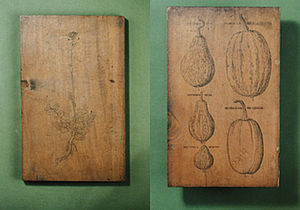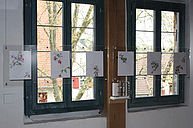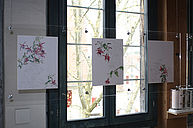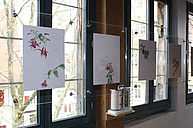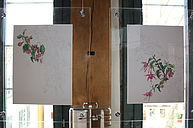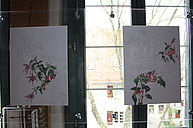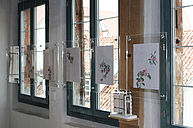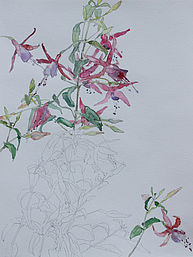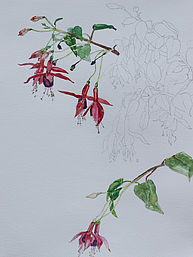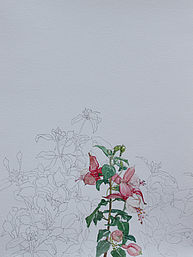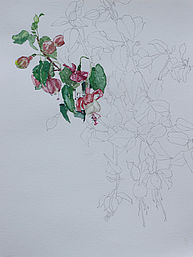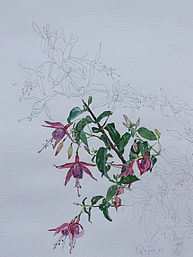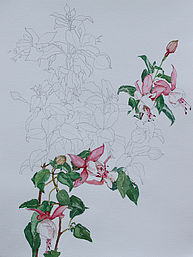Homage to Leonhart Fuchs
In the exhibition: Echo|13 artists from Tübingen
Dialogue between art and the city museum
Stadtmuseum Tübingen
21.11.2015 – 9.4.2016
„The physician Leonhart Fuchs (1501 – 1566) ordered the wooden panels to illustrate an extensive book of herbs. Two herbals were already published. In his work „De historia stirpium“ (1542) and „New Kreutterbuch“ (1543) a large number of herbs were depicted with accompanying texts about their features, medicinal benefits and preparation…
With his books of herbs Fuchs is regarded as a father of botany.“ 1
The „Fuchsia“ plant was discovered 1696/97 by the french scientist Charles Plumier and named after Leonhart Fuchs in his honour.
Inspired by the beauty and meticulousness of these botanic panels a series of Fuchsia drawings were created responding to this detailed description of plants. In contrast to the herb panels published by Leonhart Fuchs the main emphasis does not lie on the botanical description of the plants with roots, buds, petals, fruit and latin name, instead the drawings focus on the empiric perception of the plants attempting to realize the visual experience as precisely as possible.
1 Aus: Der stadthistorische Spaziergang, Begleitbuch zur Dauerausstellung im Stadtmuseum Tübingen 2005, S. 98
The presentation of the drawings refers to flowers prepared in a plant press. With their books of herbs the fathers of botany aroused interest in indigenous plants. So by the midst of the 15th century many herbaria were assembled depicting collections of dried plants.
